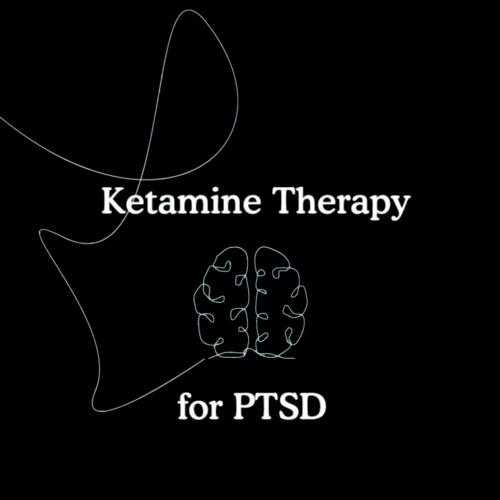Understanding Trauma Recovery: Healing from Within
Trauma is not simply an event — it is the emotional wound that remains after the event has passed. It can arise from a single incident such as an accident or loss, or from ongoing experiences like abuse, neglect, or chronic stress. Whatever its origin, trauma can deeply affect the mind, body, and spirit, leaving individuals trapped in cycles of fear, anxiety, or emotional numbness.

Trauma recovery is the process of healing these wounds — restoring safety, connection, and emotional balance. It is not about erasing the past, but about transforming the meaning of what happened, integrating the experience into one’s life story, and regaining control of one’s emotions and identity.
Modern psychology views trauma recovery as both a scientific process and a human journey. While the brain’s stress systems are affected, so too are relationships, trust, and self-worth. Healing therefore requires more than medical treatment — it needs compassion, patience, and courage.
How to Heal Your Own Trauma?
Healing from trauma begins with reclaiming safety — both physically and emotionally. The journey is deeply personal, and there is no single “right” way. However, certain principles and practices consistently support the process of recovery.
1. Acknowledge Your Pain
The first step toward healing is to accept that trauma exists and that it has affected you. Suppressing emotions or denying the impact of trauma often intensifies distress. Recognizing your pain with honesty and self-compassion opens the door to healing.
2. Create Emotional Safety
Emotional safety comes from environments — and people — where you can express feelings without judgment. Whether through therapy, journaling, or talking with a trusted friend, expressing emotions allows you to process them instead of carrying them silently.
3. Ground Yourself in the Present
Trauma pulls you into the past. Grounding techniques, such as mindful breathing, focusing on physical sensations, or naming objects in your surroundings, help anchor you in the present. Over time, grounding rebuilds the brain’s sense of safety and control.
4. Listen to Your Body
The body stores emotional pain. Practices like yoga, somatic therapy, or even gentle movement help release tension and reconnect you with your physical self. Learning to read your body’s signals is key to long-term healing.
5. Seek Professional Guidance
While self-healing is powerful, trauma recovery often benefits from professional support. Therapists trained in trauma-specific modalities such as EMDR (Eye Movement Desensitization and Reprocessing), CBT (Cognitive Behavioral Therapy), or Somatic Experiencing can help you safely process emotions and reshape thought patterns.
Healing your own trauma does not mean doing it alone — it means taking ownership of your journey, while embracing support as needed.
What Are the Stages of Trauma Recovery?
According to psychiatrist Dr. Judith Herman, trauma recovery unfolds in three major stages. Each stage builds upon the previous one, guiding survivors from chaos toward empowerment.
Stage 1: Safety and Stabilization
The first and most essential phase focuses on restoring a sense of safety — both within oneself and in the external environment. After trauma, the nervous system often remains in a heightened state of alertness, leading to anxiety, insomnia, or hypervigilance.
Establishing safety means learning to regulate these responses. This can involve:
- Building consistent daily routines
- Practicing grounding or breathing techniques
- Identifying safe spaces and supportive people
- Avoiding re-traumatizing situations
Only when a person feels secure can deeper emotional work begin.
Stage 2: Remembrance and Mourning
Once stability is achieved, individuals can begin to process the traumatic memories. This involves remembering and mourning — not to relive the pain, but to reframe it.
Through therapy, journaling, or creative expression, survivors gradually piece together their experiences, understanding the emotions attached to them. They may grieve the losses associated with the trauma — of innocence, trust, or time. This mourning is not weakness; it is a courageous act of reclaiming one’s narrative.
Stage 3: Reconnection and Integration
In the final stage, healing expands beyond survival. Survivors begin to reconnect with life, relationships, and purpose. Trauma no longer defines them — it becomes a part of their history, not their identity.
Integration may involve rebuilding relationships, pursuing new goals, or finding meaning through advocacy, creativity, or service. This is the stage where individuals truly thrive beyond trauma, transforming pain into wisdom.
What Are the 7 Steps to Healing Trauma?
Healing from trauma is not linear. It is a journey marked by progress, pauses, and renewal. The following seven steps represent a holistic approach that blends psychology, self-care, and human compassion.
Step 1: Recognize and Name the Trauma
Healing begins with recognition. Denial keeps trauma alive; naming it helps reclaim control. Understanding what happened — and how it shaped you — transforms confusion into clarity.
Step 2: Establish Safety and Stability
Before diving into painful memories, you must feel safe. Build a strong foundation of support, healthy routines, and grounding techniques. When the body and mind feel stable, recovery becomes sustainable.
Step 3: Seek Support and Connection
Isolation intensifies trauma. Healing thrives in connection. Trusted relationships — whether friends, family, or therapists — provide validation and understanding. Joining trauma-informed support groups can also help you realize you are not alone.
Step 4: Process the Emotions Safely
Trauma recovery involves re-experiencing emotions in controlled, supportive environments. This can be achieved through talk therapy, EMDR, somatic therapy, or expressive arts. The goal is to release stored pain while feeling grounded.
Step 5: Rebuild Trust and Identity
Trauma often shatters trust — in others and in oneself. Rebuilding trust starts with self-compassion. Learn to believe in your own worth, set boundaries, and allow healthy relationships to grow at your pace.
Step 6: Develop Emotional Resilience
Resilience is the capacity to recover from emotional challenges. Cultivate it through mindfulness, gratitude, physical wellness, and cognitive reframing. Each small victory strengthens your sense of agency and hope.
Step 7: Redefine Life Beyond Trauma
True healing is not about forgetting — it’s about transforming pain into purpose. Many survivors find meaning in helping others, creating art, or embracing new passions. Redefining life beyond trauma is the final step toward freedom and growth.
How Long Does It Take to Get Over Trauma?
There is no universal timeline for trauma recovery. The healing process varies based on the type of trauma, personal history, support systems, and coping strategies. Some may feel significant improvement within months, while others may require years to fully integrate their experiences.
Healing is not linear. Some days will feel empowering; others may feel like setbacks. What matters most is consistency — not perfection. With continued self-compassion, therapy, and support, the mind and body gradually return to balance.
Psychologists emphasize that recovery is not about “getting over” trauma but about living with peace alongside it. The goal is not to erase memory, but to remove its emotional control.
Professional Approaches in Trauma Recovery
While personal effort is essential, professional therapy provides the structure and expertise needed for deep healing. Common evidence-based therapies include:
- Cognitive Behavioral Therapy (CBT): Helps identify and change distorted thought patterns linked to trauma.
- Eye Movement Desensitization and Reprocessing (EMDR): Uses guided eye movements to reprocess traumatic memories and reduce emotional distress.
- Somatic Experiencing: Focuses on releasing trauma stored in the body through awareness of physical sensations.
- Acceptance and Commitment Therapy (ACT): Encourages acceptance of painful emotions while aligning behavior with personal values.
Professional support also helps survivors rebuild emotional safety, regulate the nervous system, and rediscover trust in relationships and themselves.
The Role of Self-Compassion, Support, and Community
Recovery does not happen in isolation. Self-compassion — the practice of treating oneself with kindness during suffering — accelerates healing. Many trauma survivors struggle with guilt, shame, or self-blame. Recognizing that these feelings are part of trauma’s legacy helps reduce their power.
Support from loved ones and community plays an equally vital role. Safe, empathetic relationships remind survivors that connection is possible and that vulnerability can coexist with strength. Healing communities, whether in-person or online, provide validation and belonging — two of the most powerful antidotes to trauma.
Conclusion: Healing Is Possible
Trauma recovery is one of the most courageous journeys a person can undertake. It requires patience, resilience, and the willingness to face deep emotional truths. But with compassion, support, and consistent effort, transformation happens.
Healing does not mean the absence of pain — it means reclaiming power over it. It is the quiet victory of choosing growth over fear, connection over isolation, and peace over chaos.
You may not be the same person you were before the trauma — and that’s okay. You are becoming someone stronger, wiser, and more compassionate. Healing is not about returning to who you were; it’s about creating who you are meant to be.



